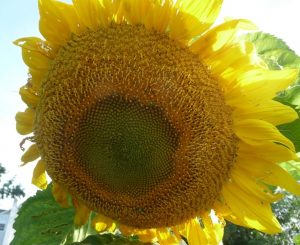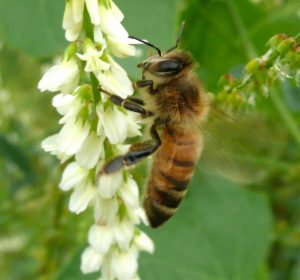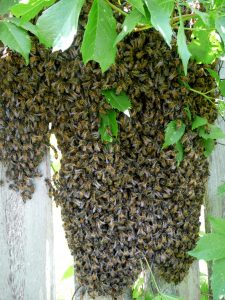Live from the Hive: September 2013
 The sunflower is such a symbol of the richness of late summer. The bees have pollinated them; their seeds are gradually maturing. Beekeepers have been harvesting honey since mid-August, elderberries have ripened and been picked. This month the honeybees will bring in goldenrod pollen, working overtime to make enough honey for the winter. Though wistful about summer’s approaching end, we rejoice in the bounty of all the wonderful foods our rich land has produced. Here at Caledonia Spirits we enjoy preserving the summer’s bounty with elderberries in our cordial and raw northern honey in all of our products. We can look forward to tasting summer on a cold day next winter.
The sunflower is such a symbol of the richness of late summer. The bees have pollinated them; their seeds are gradually maturing. Beekeepers have been harvesting honey since mid-August, elderberries have ripened and been picked. This month the honeybees will bring in goldenrod pollen, working overtime to make enough honey for the winter. Though wistful about summer’s approaching end, we rejoice in the bounty of all the wonderful foods our rich land has produced. Here at Caledonia Spirits we enjoy preserving the summer’s bounty with elderberries in our cordial and raw northern honey in all of our products. We can look forward to tasting summer on a cold day next winter.
 There is nothing so thrilling as lying in the grass on a hot May or June day while thousands of bees fly in a circular pattern overhead, the air filled with the sound of their wings. Drawn by the queen’s pheromone, the swarm comes to temporary rest in a large clump on the branch of a tree or other structure. Here they hang in an amazingly quiet cluster until scout bees have found a suitable permanent home. As the sun beats down and the soft grass tickles your arms, you experience Life and Nature in all their glory.
There is nothing so thrilling as lying in the grass on a hot May or June day while thousands of bees fly in a circular pattern overhead, the air filled with the sound of their wings. Drawn by the queen’s pheromone, the swarm comes to temporary rest in a large clump on the branch of a tree or other structure. Here they hang in an amazingly quiet cluster until scout bees have found a suitable permanent home. As the sun beats down and the soft grass tickles your arms, you experience Life and Nature in all their glory.